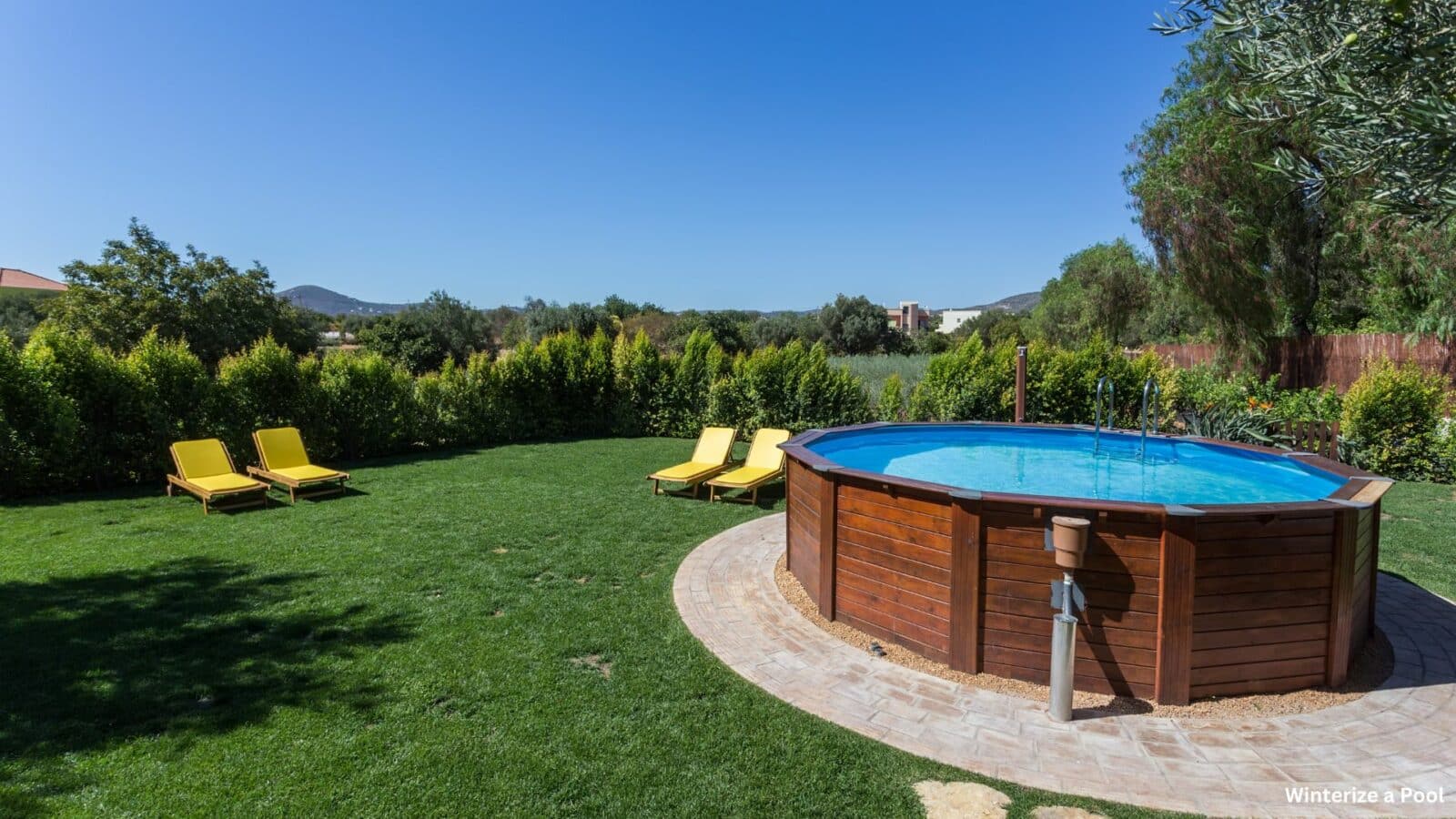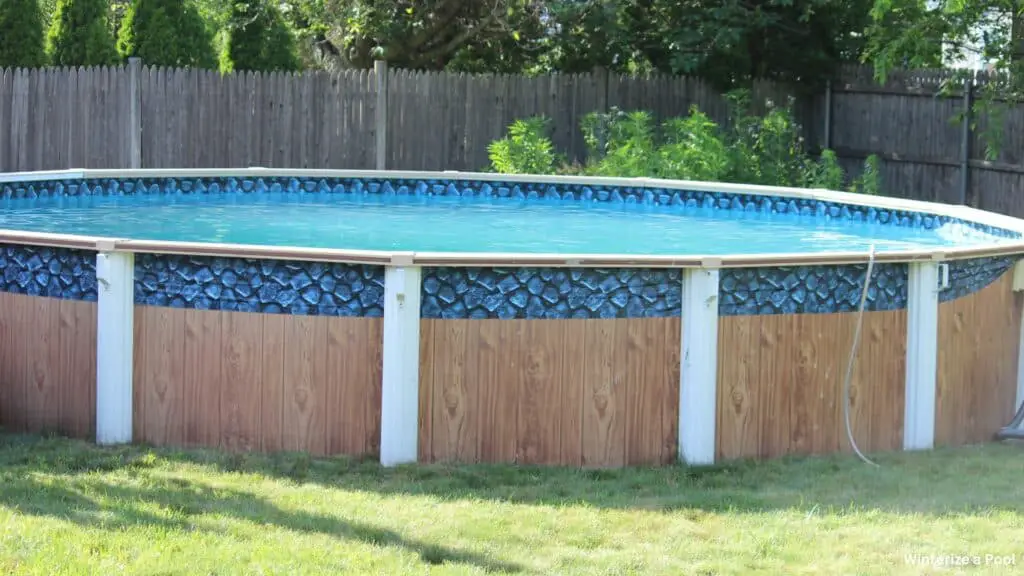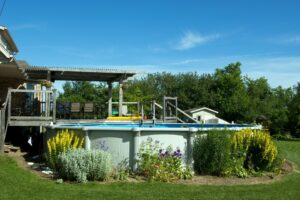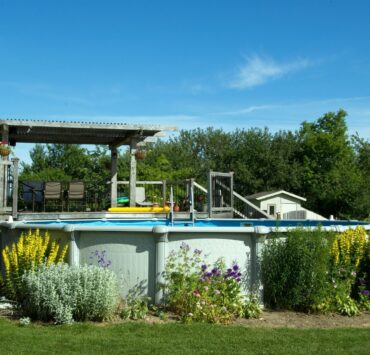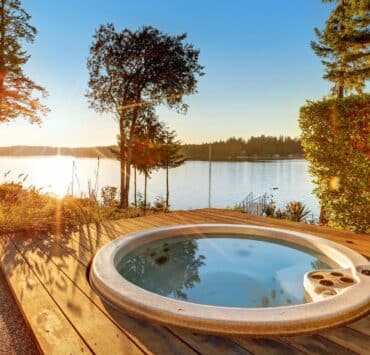Winter’s coming. With summer coming to an end as temperatures drop, here’s what you must know about how to winterize an above ground pool.
Read through this article to help you prepare your above ground pool into its own version of clean and cozy winter hibernation.
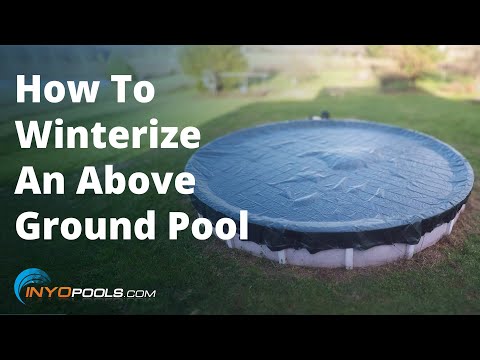
Why You Need To Winterize An Above Ground Pool
Winterizing your pool is for preventative maintenance. It’s also easier to winterize your pool prior to winter than to deal with bigger issues when spring comes along. In the same way you’d clean out your pool water during summer, sealing off your pool with clean water saves you from dealing with algae overgrowth and irreversibly unbalanced water.
Additionally, winterizing your above ground pool prevents damage from cold and/or ice among your pool frame, pipes, and pumps.
Depending on where you live, when temperatures begin to fall below 65º, take it as the go-signal to close your pool. Refer to these steps as a guide to how to get your above ground pool through winter.
How To Winterize An Above Ground Pool
Clean Your Pool
Leaving your pool in good condition before closing will give you a pool that’s in good condition when you open it. Or at least save you from rigorous spring cleaning.
You don’t want to make your pool petri dish over winter, so give it a thorough vacuuming, scrubbing, and brushing. Doing so will lessen or prevent the growth of mold and algae.
Balance And Test Your Pool Water
Balancing your water is a critical step in this home improvement project. Balance your water about a week before you plant to close it.
Aim to have your pool waters at the following conditions. If your test readings are in the higher range, that’s okay. These levels will decrease throughout winter.
Aim to get these numbers in your readings using test strips or a water testing kit.
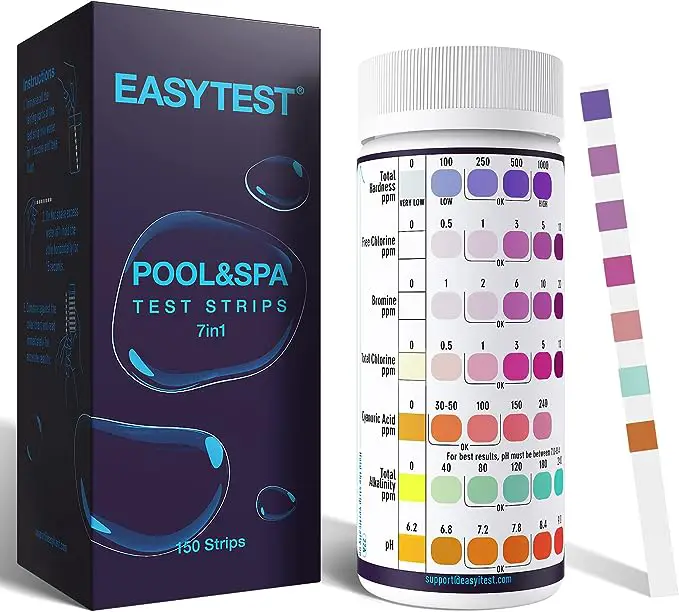
Alkalinity between 100 to 150 ppm
Adjusting your above ground pool’s alkalinity comes before adjusting your pool’s pH levels. Aim for 100 to 150 ppm.
Use muriatic acid to lower the alkalinity and sodium bicarbonate or a dedicated alkalinity increaser to get the alkalinity higher.
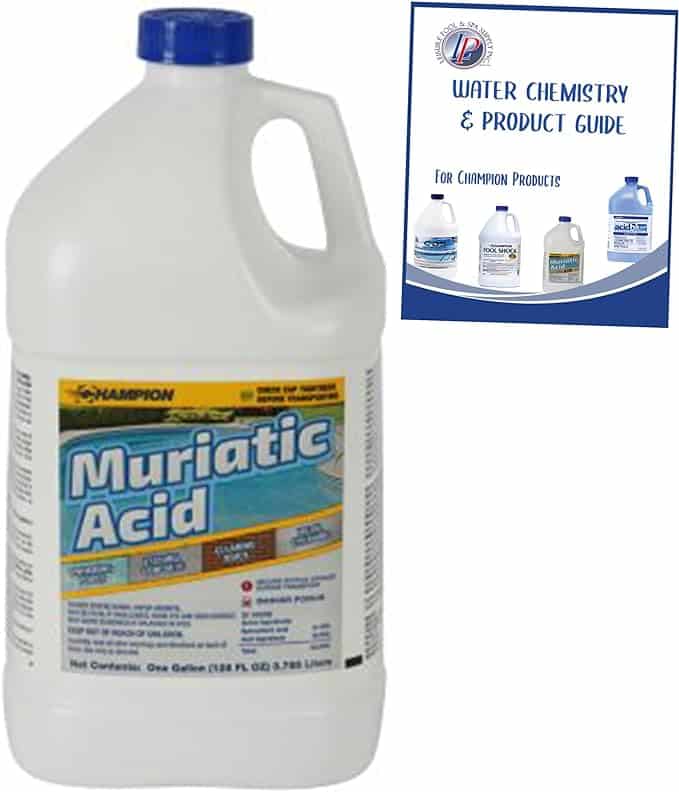
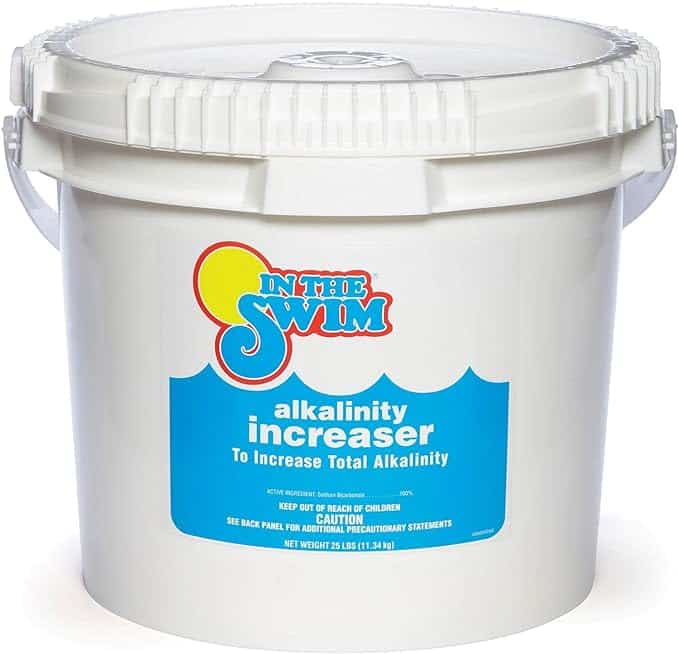
A pH at a 7.4-7.6
When the alkalinity levels of your above ground pool are set, you can proceed to adjust the pH by adding more acid or base accordingly.
Calcium hardness between 200 and 350 ppm
You need to get your pool’s calcium hardness in the correct range to avoid damage. Too much calcium can cause build-up from calcium deposits and too little calcium in the pool will leach calcium from your pool tiles, plaster, and grout.
Additionally, if your pool water is too soft, it can corrode metal. Use a calcium hardness increaser to get to the optimal level.
Add Winterizing Chemicals
Give your above ground pool a cocktail of winterizing chemicals to help it get through the winter, damage-free. You can make this process easier by purchasing a winterizing kit appropriate to your above ground pool size.
Simply follow the directions on the label in accordance with your pool.
Shock The Pool
To prevent algae, bacteria, and other contaminants from forming in your above ground pool, you’ll need to raise the water’s ‘free chlorine’ levels using shock treatment.
At least 2 days before you plan to close your above ground pool, evenly apply shock treatment to the water. Follow the instructions on the product for the proper dosing, or use 1 pound of shock treatment for every 5,000 gallons of water.
After you’ve added shock treatment to your pool, wait for the chlorine levels to fall to or below 5ppm before proceeding to the next step.
This should take at least 24 hours, but to be certain, test the chlorine levels.
Add Algae Preventative
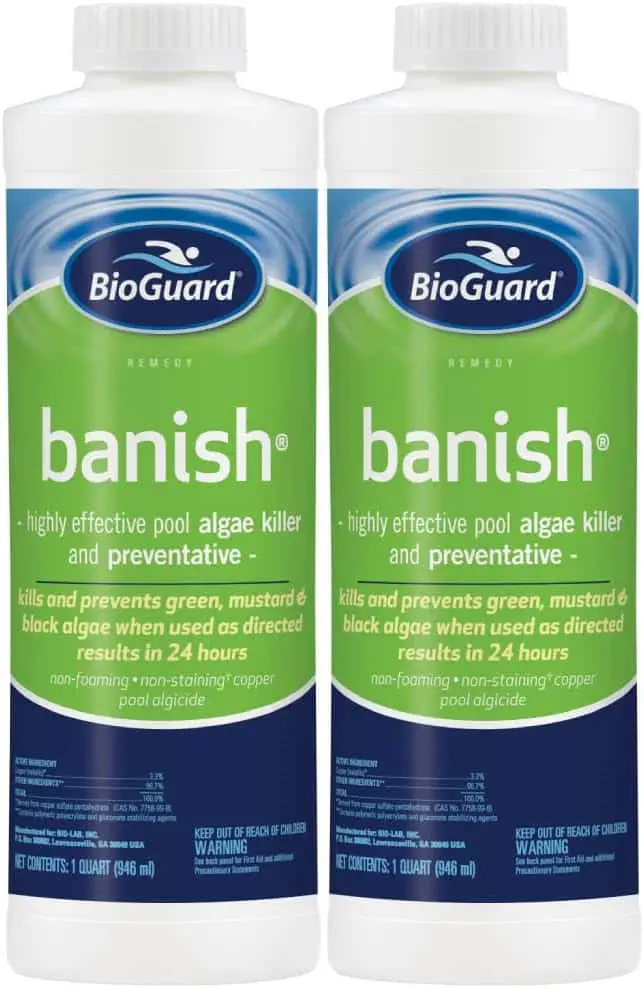
In a clean bucket, mix algae control according to the product’s directions. Alternatively, for every 4,000 to 5,000 gallons of pool water, add 4 ounces of liquid algae preventative.
It’s important to note that you shouldn’t add algae preventative right after adding shock treatment to your pool water.
Not only can this cause a bad chemical reaction, but both treatments will also negate each other. Wait at least 24 hours after shocking your pool to add algae preventative.
When your pool water is ready to take in algae preventative, run the pool filter then slowly add the algae control mixture along the perimeter of the pool water.
Ensure that you add the algae control evenly and do not add too much to a single area. Allow the pool filter to run with the algae preventative for 1-2 hours.
Raise The Chlorine Level
Raise your chlorine levels to stay between 2 to 4 ppm. Use ½ ounce of chlorine product for every 5,000 gallons of water, or follow the product’s directions.
Once you’ve achieved the right chlorine level, allow your pool filter to run for 4-6 hours. When you’re done running the filter, turn it off and unplug the pump so you can take out the filter and clean it.
Add A Winterizing Pill
To seal in all your winterizing efforts, add a winterizing pill. A winterizing pill maintains all the hard work you’ve put in for your pool water quality. Simply place the pill in the water where it will float beneath the pool cover.
It’s designed to last for 6 months, so a winterizing pill will release formula and maintain your pool well throughout the winter.
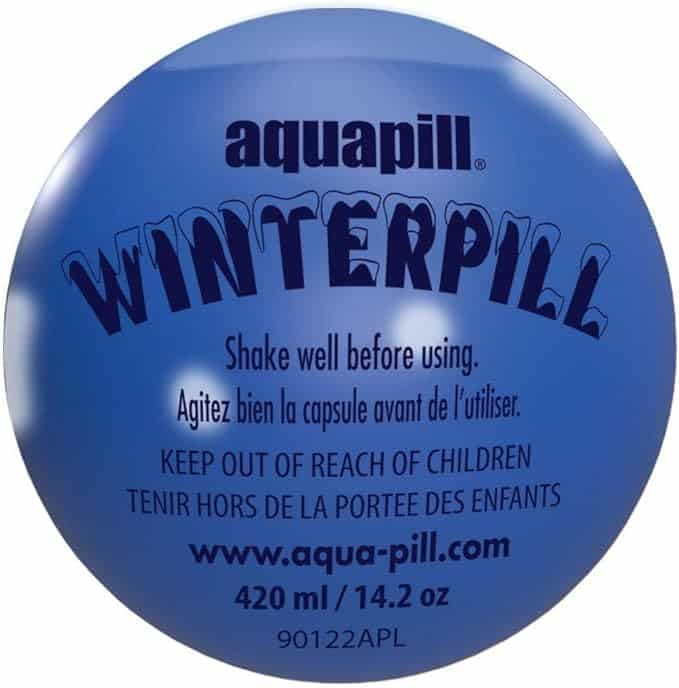
Winterizing The Pool Components
Drop The Water Level
If you live in an area where winter temperatures are freezing, consider the expansion of frozen water. You’ll need to lower the water level of your above ground pool to prevent damage from expansion.
Use a hand siphon or a submersible pump to get your water level at least 4 inches below the skimmer.
Remove And Store Your Pool Components
Disconnect your pool lines and fully drain the remaining water. Allow them to completely air dry before storing them away for the winter. Removing your pool lines will prevent ice damage they’ll likely incur.
Once your pool lines are stored, you can drain the chlorine feeder. Lastly, remove, dry, and store all your pool components such as the pool pump, filter, hoses, ladders, toys, etc.
Add Pool Cover Supports And A Pool Cover
On the day you cover your pool, give it one final clean by vacuuming and scrubbing it. When you’re ready to cover your above ground pool for the winter, add pool cover supports.
These act as floating pillows to keep the pool covered above the water. Additionally, pool covers will make checking on the pool easier in the face of freezing. Tie-down cover supports with nylon rope to keep them in place.
Once the supports are in place, cover the entire above ground pool with a dedicated pool cover. Don’t improvise with a pool cover such as tarpaulin, as this won’t provide the necessary protection.
Finally, secure the pool cover into place with weighted bags. Throughout the winter, lift the pool cover to check on your water. If you notice any algae growth, you can add more algae preventatives.
If your above ground pool is located underneath trees, pair the cover with a mesh net to catch any fallen leaves.
Shutting Down
The last step to winterizing your above ground pool is to shut off the water and the power. Turn off the electricity both from the outlet and the circuit breaker. For faucets that are located outside, secure them with a winter cover.

Winterizing your pool may be tedious, but it’s well worth the effort. If you’re not up for the task, you can always hire professionals to do the job for you. The idea is to keep your pool clean and snug throughout winter to save you from a spring cleaning headache. Taking the time to winterize your above ground pool will prolong its longevity for many more springs and summers to come.
